Out with Papa-figos
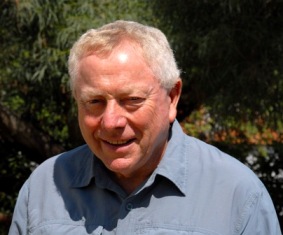
Clive Viney - co-author of Algarve Wildlife - the natural year
Papa-figos (which literally translates as fig eater) is the Portuguese name for the Golden Oriole, one of the iconic visiting birds of the Algarve. Clive Viney is the co-author of Algarve Wildlife - the natural year, and now, under the guise of Papa-Figos, chronicles his finds, thoughts and feelings while walking in the Algarve countryside throughout the natural year. Look out for his regular updates, illustrated by his fellow co-author and photographer, Ray Tipper, who has kindly provided some of the photographs that illustrate these articles by clicking through from the links below.
Behind the Beaches of the Eastern Algarve
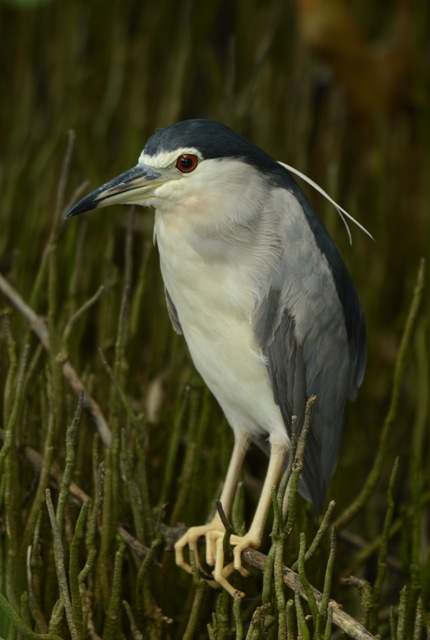
Adult Night Heron - Ray Tipper. Licence enquiry...
It was 21st May and lockdown had been lifted but El Scorchio had arrived. It would just get hotter and hotter, so it was essential to start early. I should have headed west to the marina in the centre of Faro and joined others admiring the Yellow-crowned Night Heron (see Transatlantic arrival in Faro is a first for Continental Europe by Ray Tipper in Conservation Articles on this website) but I knew the species well from visits to the West Indies and in truth liked to make my own discoveries. So well before the sun rose I headed east towards Spain.
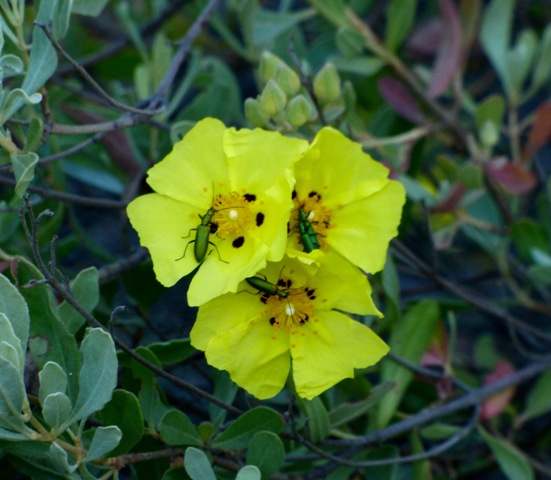
Halimium halimifolium being serviced by false blister beetles
At the extreme southeast corner of Portugal is 430 hectares of protected dunes and hinterland – see The Pines of Monte Gordo (Papa-figos index below will get you there). The area around the Aldeia Nova Lake has always been a favoured port of call on my visits to the splendid natural sites in the Lower Guadiana Valley. The pines around the lake mostly yielded more botanical interest than birds but the lake often produced interesting water and waterside birds. Today I arrived at sunrise. I had never been there so early and was pleasantly surprised how birdy it was. Iberian Azure-winged Magpies, an Iberian Green Woodpecker, Crested Tits and Great Tits greeted me and a pair of Golden Orioles chased each other and showed well. There were not many water birds, just a few pairs of Common Coot, a Moorhen, a drake Common Pochard and a pair of Gadwall but as I looked for more three adult Night Herons circled and dropped in and conveniently perched at the edge of the reeds. Later a long-legged Purple Heron joined them and a flock of 21 Glossy Ibis came down and took a look but decided to continue on towards the Coto Doñana. Night Herons are crepuscular and adults are not often seen in the Algarve. It wasn’t just the birds, both forms (spotted and unspotted) of the lovely cistus-like Halimium halimifolium were in flower and gaudy male Violet Dropwing dragonflies added further colour.

Violet Dropwing
Due to Covid-19 the Spanish border had been firmly closed for some weeks, so I thought a continuation to the long breakwater on the Portuguese side of the mouth of the Rio Guadiana would be a good idea. In normal times this had become a favourite haunt of Spanish fishermen but today, as anticipated, there were just a few Portuguese fisherman making the most of ample elbow room.

Dune flora at the Guadiana Breakwater
I telescoped the sand bars, which were full of gulls and a few terns and Oystercatchers. Seawatching just produced one or two plunge-diving Northern Gannets, so I wandered into the dunes. I was surprised and delighted with the wealth of wildflowers and wildlife in this specialist habitat. Sea Holly, Sea Spurge, Sea Rocket, Sea Medick, Sand Stock, Spanish Oyster Plant, the aptly named Curry Plant and lovely Cape Marigolds all showed well. Spiny-footed Lizards dashed across the sand from one vegetation clump to the next. Extraordinary butterfly-like spoonwings were obvious and easily photographed and my camera also captured an antlion but it was not as exciting as its name.

Sea Holly
It was hotting up, so I decided to head back to Tavira but the tide was low and I could not resist a look at the Canal de Tavira, the sea channel that runs between the barrier islands (just huge sand dunes) and the heart of the Ria Formosa. Here the maritime flora is quite different and at this time of the year dominated by Limoniastrum Limoniastrum monopetalum, which creates great splashes of purple everywhere.
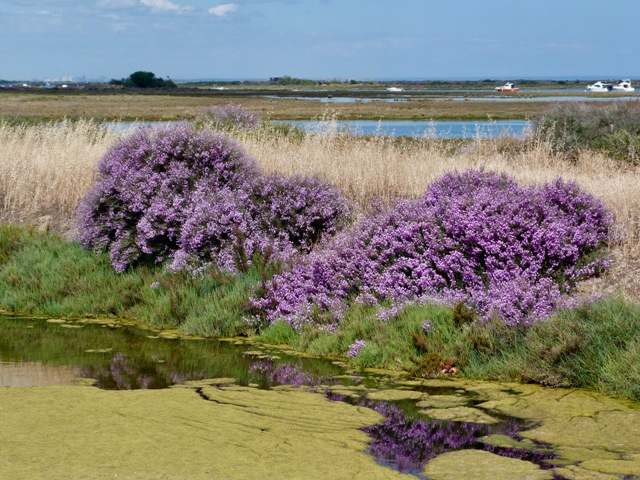
Limoniastrum
The exposed mud held literally thousands of European Fiddler Crabs Uca tangeri waving their huge communicating claw. The name is a misnomer because this is primarily a West African species but best is the Spanish name violinista africana.
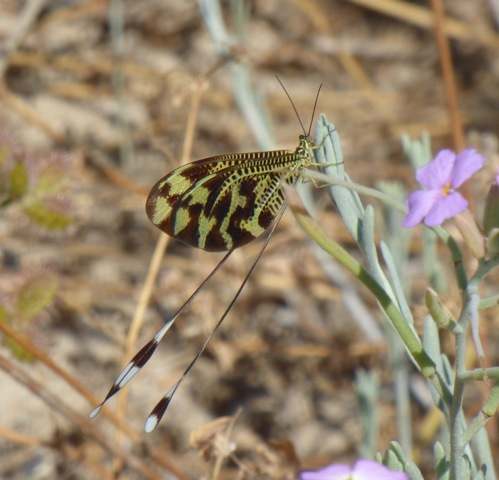
Nemoptera bipennis a spoonwing
And then to home for some self-isolation and a very welcome icy beer.


